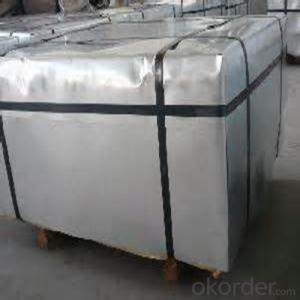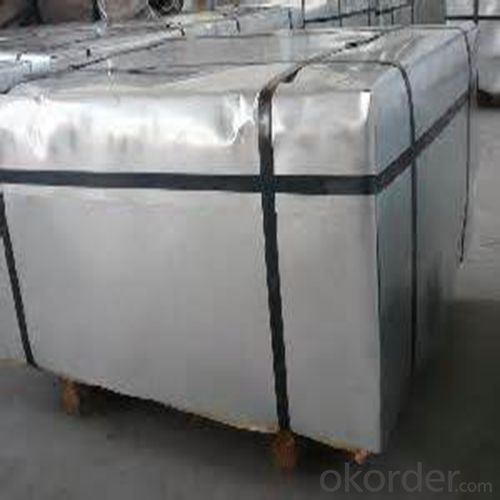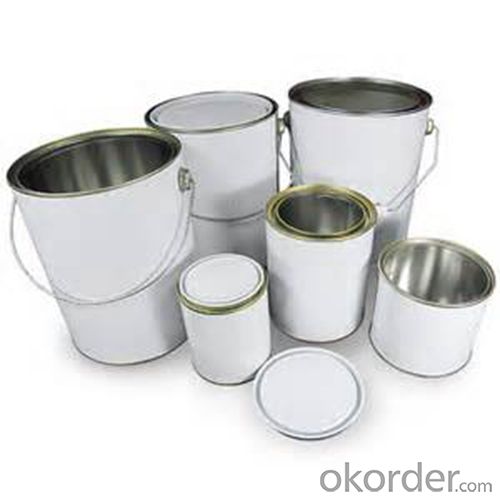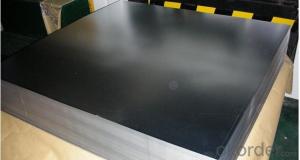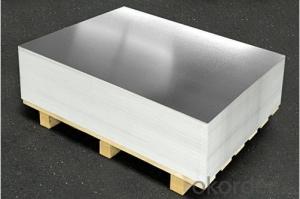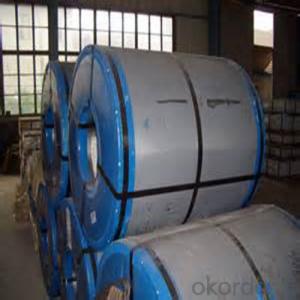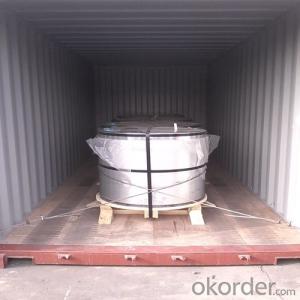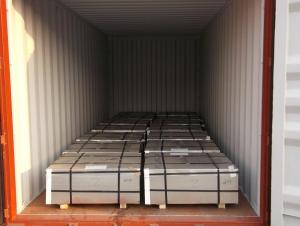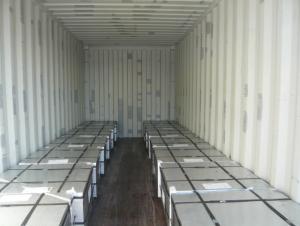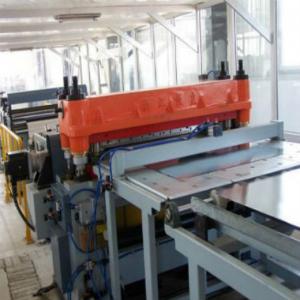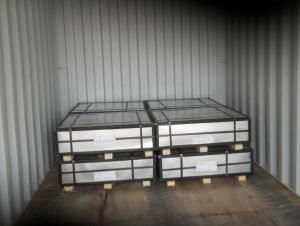Electrolytic Tinplate of Prime Grade Quality for Metal Package
- Loading Port:
- Shanghai
- Payment Terms:
- TT OR LC
- Min Order Qty:
- 25 m.t.
- Supply Capability:
- 30000 m.t./month
OKorder Service Pledge
OKorder Financial Service
You Might Also Like
Specification
1.Structure of Electrolytic Tinplate of Prime Grade Quality for Metal Package Description
Electrolytic Tinplate undoubtedly enjoys the pride of place as a packaging medium especially for food. It owes its unique position to its "nine layer sandwich structure", each of which contributes to its eminence as a packing material. The steel base of electrolytic tinplate provides the necessary strength and formability for can fabrication. The tin-iron alloy layer provides the bond between the steel and free tin layer. The free tin layer is not only responsible for the attractive bright finish and ease of solderability but is also non-toxic- a factor of vital importance in food packaging!
2.Main Features of the Electrolytic Tinplate of Prime Grade Quality for Metal Package
Electrolytic Tinplate (ETP) is a thin, cold-rolled carbon steel sheet coated with tin. The steel substrate provides the necessary strength and formability for specialty fabrication. The alloy layer provides the bond between the steel and free tin layer. The free tin layer is not only responsible for the attractive bright finish and ease of solderability but is also non-toxic, a factor of vital importance in food packaging.
3.Electrolytic Tinplate of Prime Grade Quality for Metal Package Images
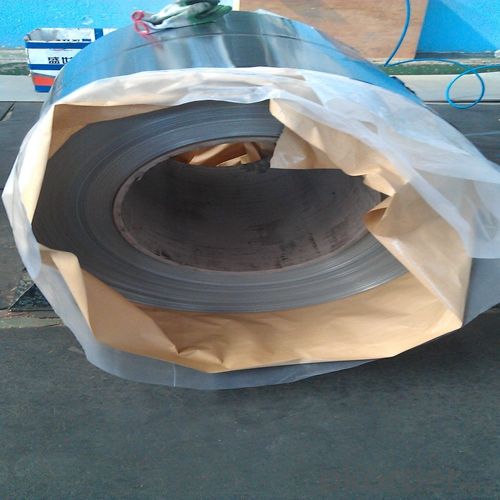
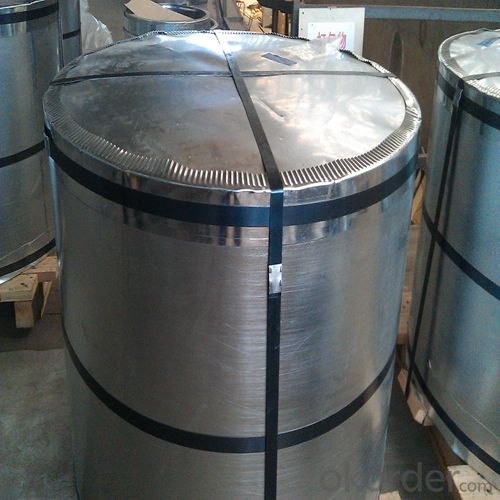
4.Electrolytic Tinplate of Prime Grade Quality for Metal Package Specification
Specification of :
Standard: ISO 11949 -1995, GB/T2520-2000,JIS G3303,ASTM A623, BS EN 10202
Material: MR,SPCC
Thickness:0.15mm - 0.50mm
Width: 600mm -1150mm
Temper: T1-T5
Annealing: BA & CA
Coil Inner Diameter: 508mm
Weight: 6-10 tons/coil 1~1.7 tons/sheets bundle
Passivation:311
Oil: DOS
Surface: Finish,bright,stone,matte,silver
5.FAQ of Electrolytic Tinplate of Prime Grade Quality for Metal Package
- What is tinning and how does it work?
Tinning is the process of thinly coating sheets of wrought iron or steel with tin, and the resulting product is known as tinplate. It is most often used to prevent rust.
- Do you only have prime quality tinplate?
We can supply both prime and second quality tinplate.
- Q: How is tinplate coated for electrical enclosures?
- Tinplate is coated for electrical enclosures through a process called electroplating, where a layer of tin is applied onto a steel sheet. This is achieved by immersing the steel sheet into an electrolyte solution along with a tin anode, and passing an electric current through the solution. The electric current causes the tin ions in the solution to be attracted to the steel sheet, resulting in a thin and uniform tin coating on its surface. This tin coating provides electrical conductivity and corrosion resistance, making the tinplate suitable for use in electrical enclosures.
- Q: What's the difference between iron, aluminium, stainless steel, galvanized iron and tin?
- Iron is another kind of material. It is easy to be oxidized (embroidered) when it meets waterGalvanized sheet is made of iron, but zinc is plated on the surface to improve oxidation resistance. The price is cheap
- Q: Who knows the process of tinplate production?
- 1. remove the oxide scales produced during hot rolling;2. the strip side edge trimming;3. coated with rolling oil, play a role in rust and lubrication;4. check and remove all kinds of surface defects which are harmful to the subsequent cold rolling process;
- Q: How is tinplate coated with metallic coatings?
- Tinplate is coated with metallic coatings through a process known as electroplating, where a thin layer of metal is deposited onto the surface of the tinplate using an electric current. This electroplating process helps to enhance the corrosion resistance and aesthetic appeal of the tinplate.
- Q: What are the advantages of using tinplate for packaging?
- Tinplate offers several advantages for packaging. Firstly, it provides excellent protection against moisture, air, and light, which helps in preserving the quality and freshness of the packaged product. Secondly, tinplate is highly durable and can withstand rough handling during transportation and storage. It also offers resistance against corrosion, ensuring the longevity of the packaging. Additionally, tinplate is easily recyclable, making it an environmentally friendly choice. Lastly, tinplate can be shaped into various sizes and designs, allowing for attractive and customized packaging options.
- Q: Can tinplate be used for electrical appliances?
- Yes, tinplate can be used for electrical appliances as it provides a durable and corrosion-resistant coating that can protect the appliances from moisture and other external elements. Additionally, tinplate has good electrical conductivity properties which make it suitable for electrical applications.
- Q: Can tinplate be used for aerosol cans?
- Yes, tinplate can be used for aerosol cans. Tinplate is a commonly used material for making aerosol cans due to its durability and ability to resist corrosion. It also provides a barrier against oxygen, moisture, and light, ensuring the contents of the aerosol can remain protected.
- Q: What are the main challenges in recycling tinplate?
- One of the main challenges in recycling tinplate is the separation of tin from steel. Tinplate is a combination of steel coated with a thin layer of tin, which provides corrosion resistance. However, separating these two materials during the recycling process can be costly and technically complex. Additionally, tinplate often contains various contaminants, such as paints, coatings, and labels, which need to be removed before recycling. Ensuring the proper collection and sorting of tinplate waste is another significant challenge as it requires educating the public about the importance of recycling and providing convenient recycling infrastructure.
- Q: What are the main factors influencing the growth of the tinplate market?
- The main factors influencing the growth of the tinplate market include the increasing demand for packaged food and beverages, growth in the industrial sector, rising urbanization, and technological advancements in tinplate manufacturing. Additionally, the shift towards sustainable and recyclable packaging materials is also driving the growth of the tinplate market.
- Q: Is it necessary for the two cold rolling in the process of tinplate production, such as tempering and cold rolling (also called flatness)?
- This is not the standard terms, generally refers to the 2 cold rolling coil after cold rolled hardness increased after heat treatment after recrystallization to obtain greater reduction.
Send your message to us
Electrolytic Tinplate of Prime Grade Quality for Metal Package
- Loading Port:
- Shanghai
- Payment Terms:
- TT OR LC
- Min Order Qty:
- 25 m.t.
- Supply Capability:
- 30000 m.t./month
OKorder Service Pledge
OKorder Financial Service
Similar products
Hot products
Hot Searches
Related keywords
